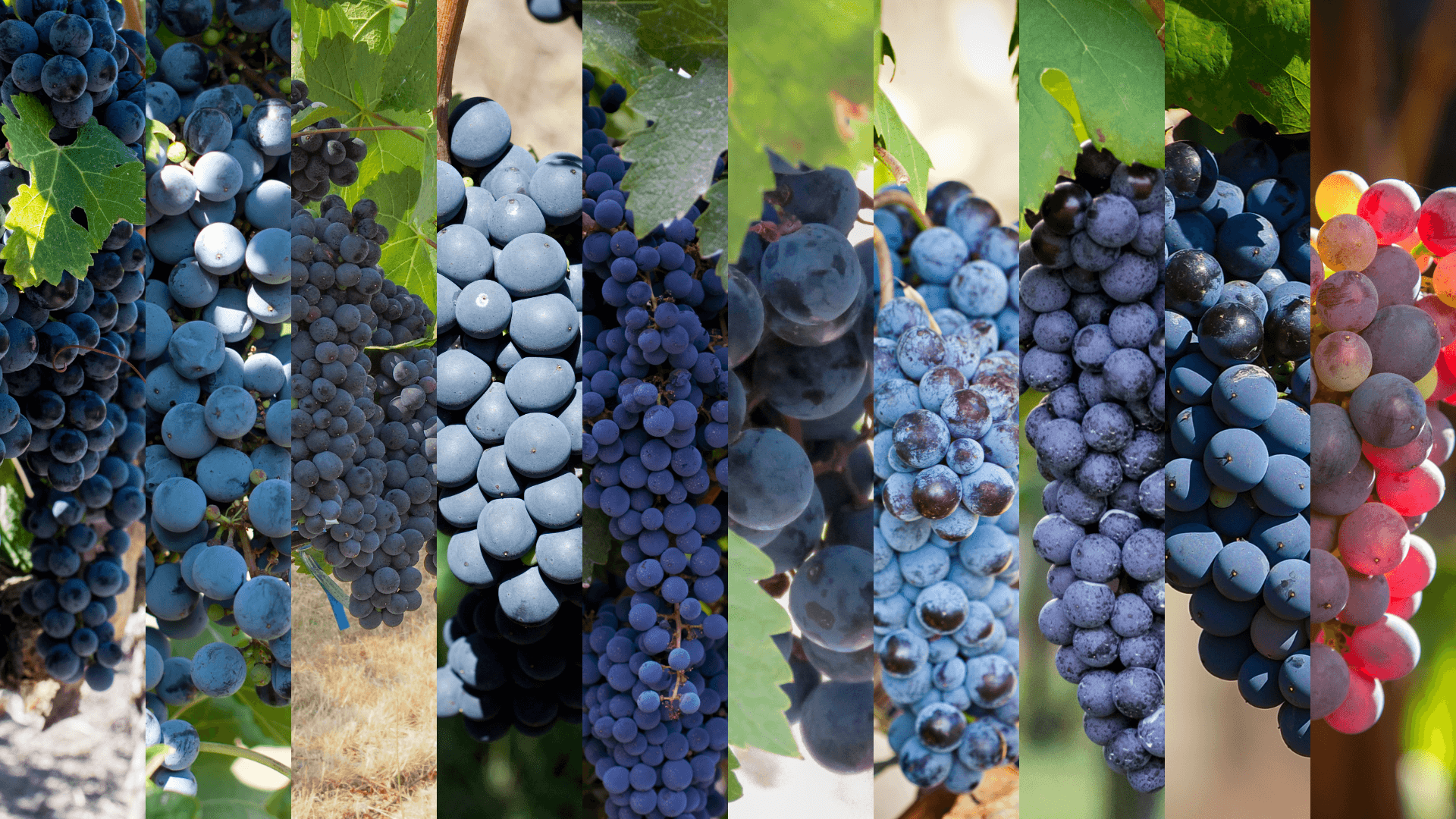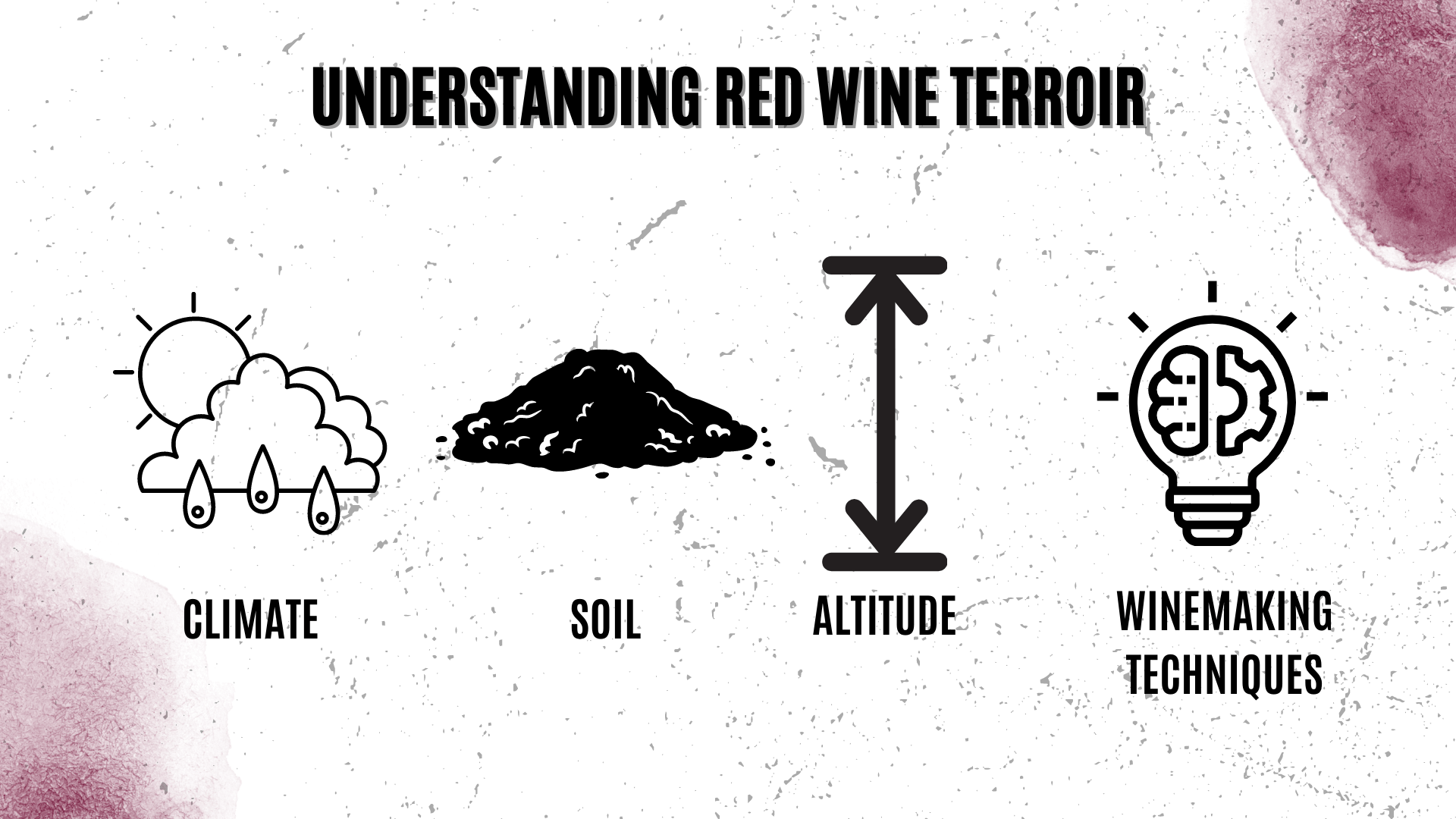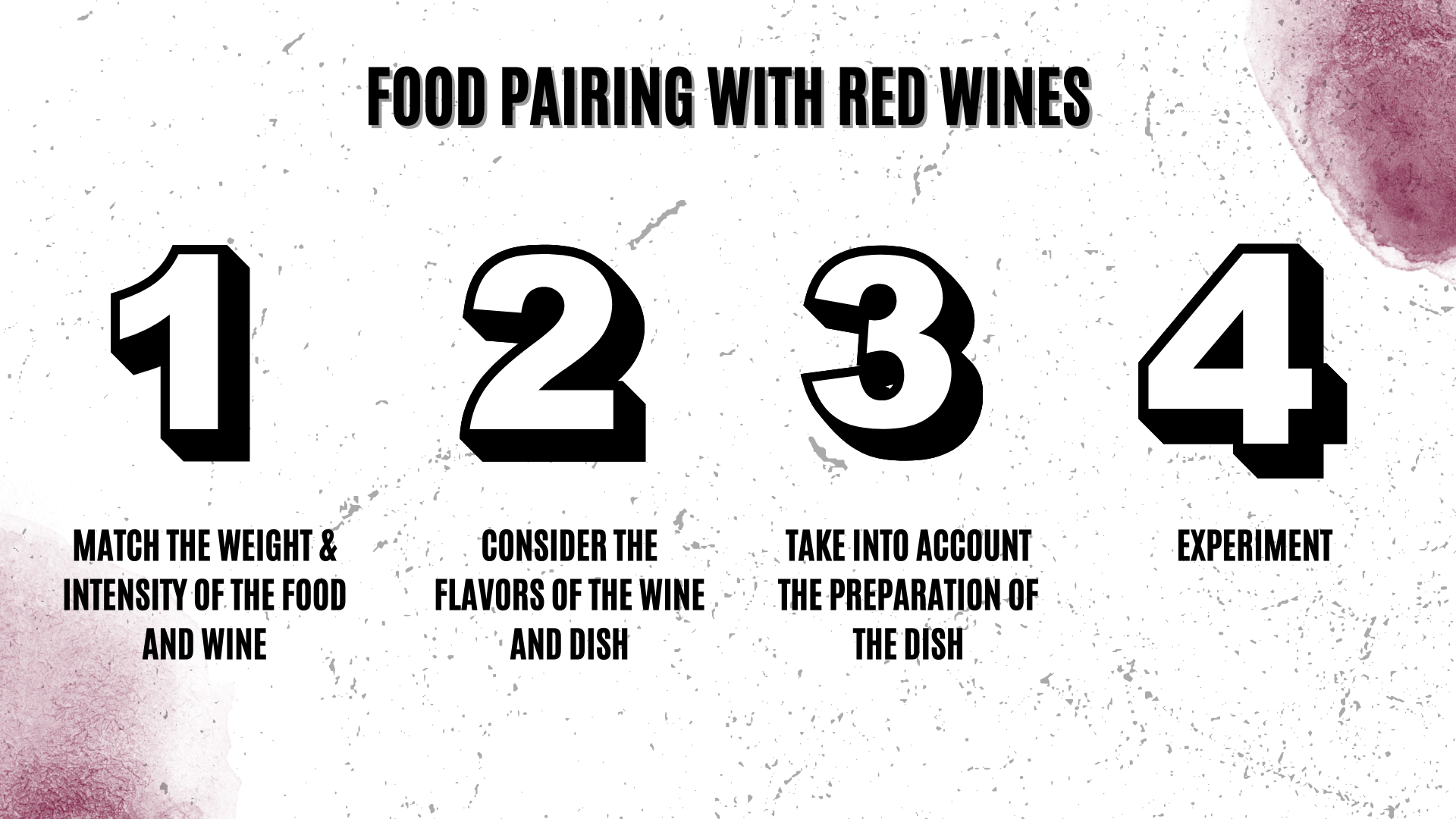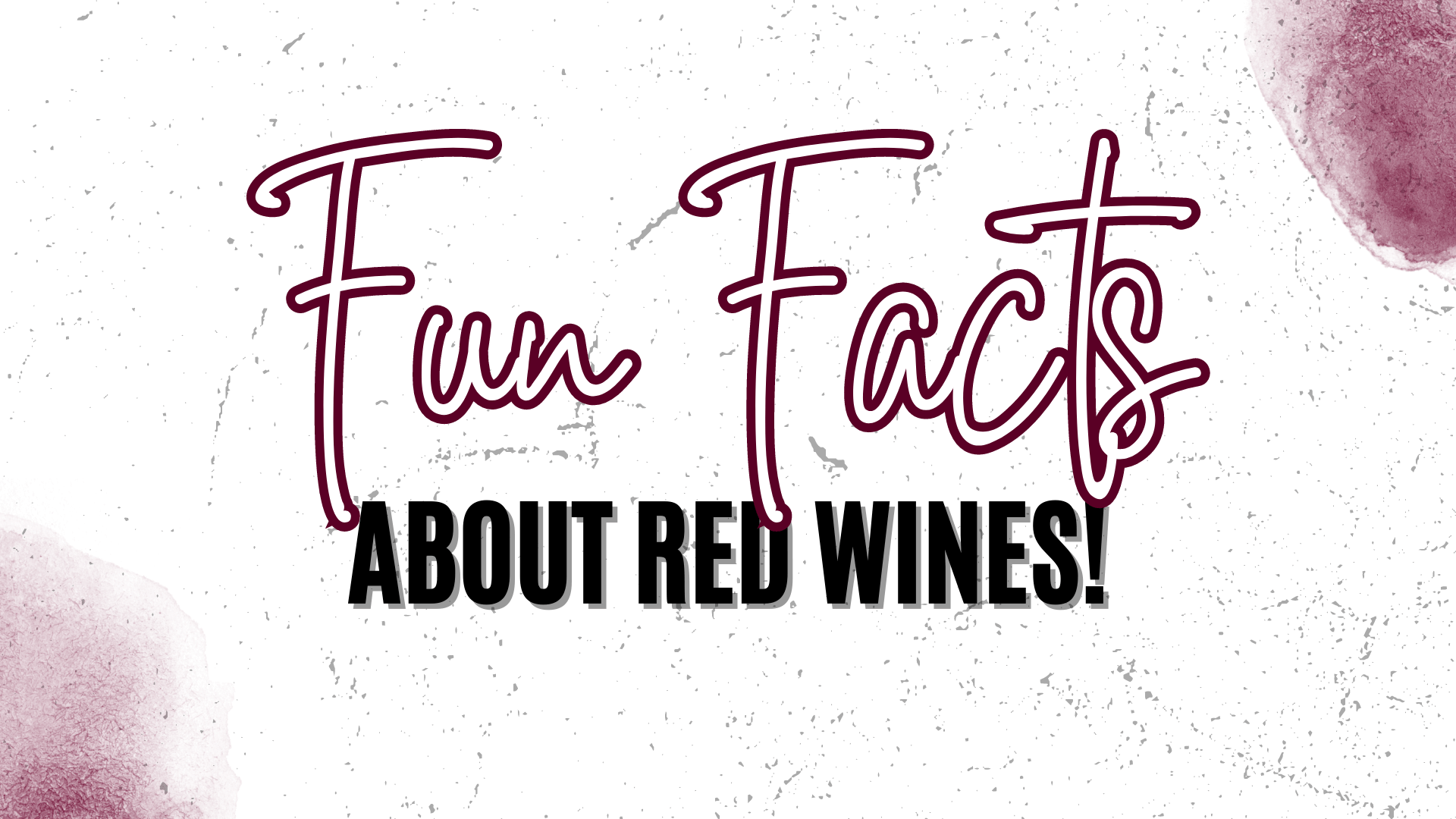Introduction
Red wines have captured the hearts and palates of wine lovers across the globe. With their diverse range of flavors, textures, and styles, they offer a unique drinking experience that can be tailored to suit any occasion. In this comprehensive guide, we will delve into the world of red wines, exploring grape varieties, terroir, winemaking techniques, and food pairings to help you gain a deeper appreciation for these delightful libations.
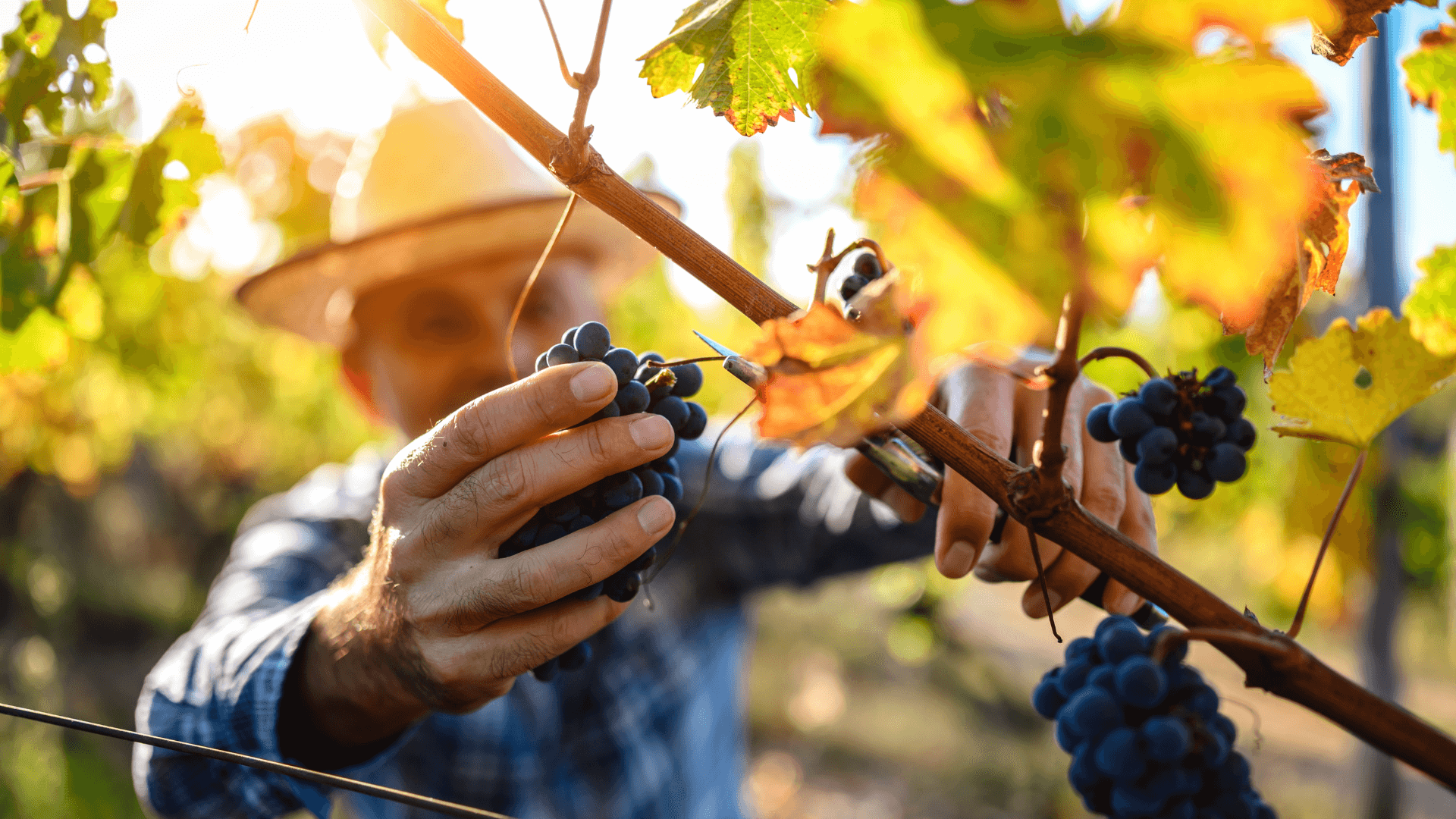
I. History of Red Wines
- The first evidence of winemaking dates back to around 6,000 BC in the Caucasus region, with the earliest archaeological evidence of red wine production found in ancient Georgia.
- The ancient Egyptians enjoyed wine, with red wine made from grapes grown along the Nile Delta.
- The ancient Greeks and Romans played a significant role in the history of wine, with red wines being an essential part of their culture, religion, and trade.
- During the Middle Ages, monks in Europe were responsible for refining winemaking techniques, and monasteries became centers of viticulture and wine production.
- The modern era of winemaking began in the 19th century, with the development of new techniques, the classification of famous wine regions, and the spread of viticulture worldwide.
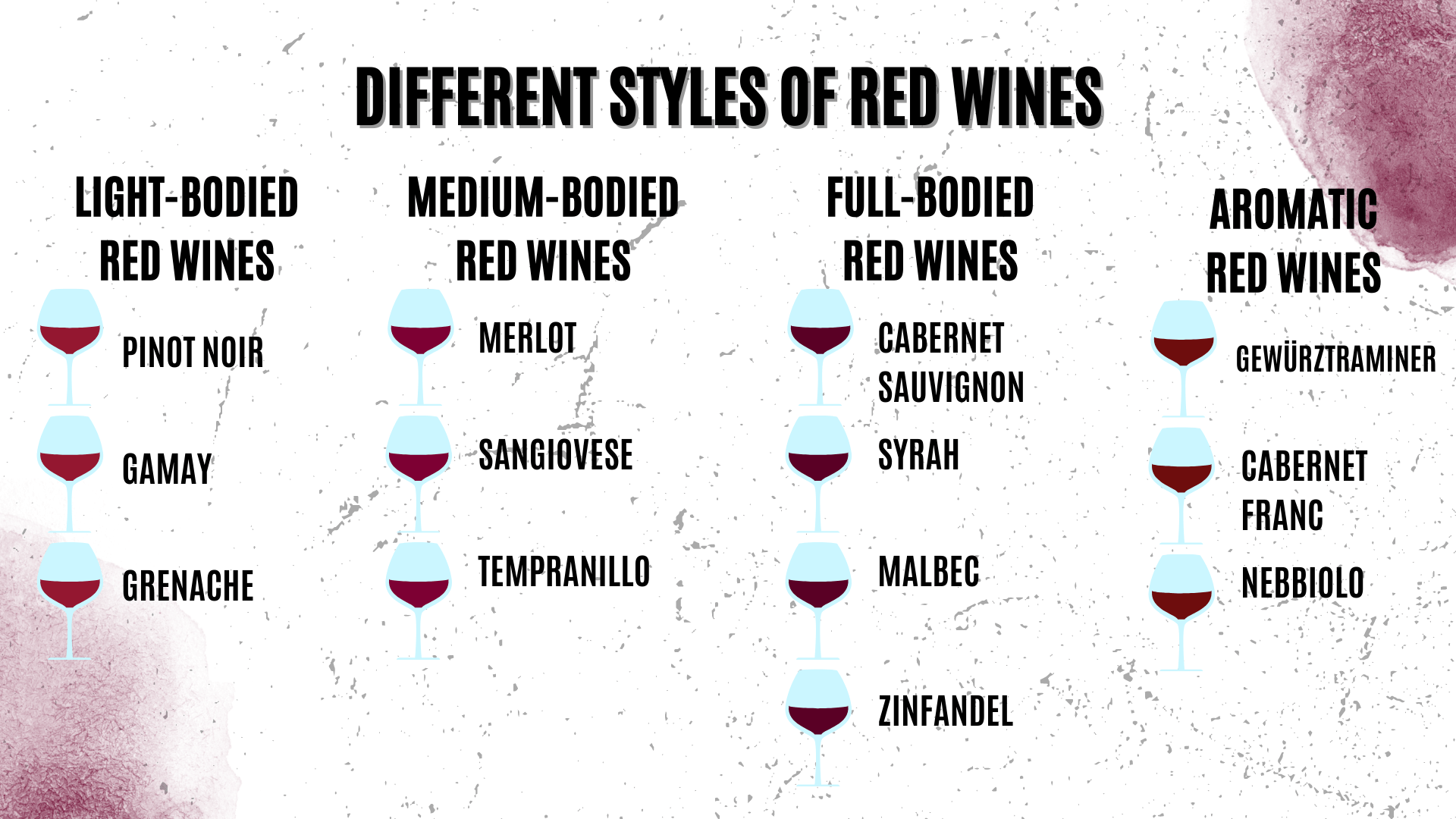 II. Different Styles of Red Wines
II. Different Styles of Red Wines
1. Light-Bodied Red Wines
These red wines have a lighter texture and mouthfeel, with lower tannin levels and higher acidity. They are often fruit-forward and easy-drinking, making them perfect for casual sipping or pairing with lighter dishes.
- Pinot Noir: Known for its delicate, silky texture, Pinot Noir offers flavors of red fruits, such as cherry, raspberry, and strawberry, along with earthy and floral notes.
- Gamay (Beaujolais): Hailing from the Beaujolais region of France, Gamay wines are juicy, refreshing, and fruity, with flavors of red berries, banana, and sometimes a hint of bubblegum.
- Grenache: This versatile grape variety produces wines with bright red fruit flavors, such as strawberry and raspberry, and spicy undertones.
2. Medium-Bodied Red Wines
Medium-bodied red wines offer a balance between tannin, acidity, and fruit flavors. They have a more substantial mouthfeel than light-bodied reds but are not as heavy as full-bodied reds, making them versatile choices for a variety of dishes and occasions.
- Merlot: A popular choice for its smooth texture and approachable flavors of plum, black cherry, and chocolate, Merlot is often blended with other red grape varieties but can also stand on its own.
- Sangiovese (Chianti): The primary grape in Italy’s famous Chianti wines, Sangiovese is known for its flavors of red cherry, tomato, and earthy, herbal notes.
- Tempranillo (Rioja): Spain’s star red grape variety, Tempranillo produces wines with flavors of cherry, plum, tobacco, and vanilla, often aged in oak barrels to add complexity.
3. Full-Bodied Red Wines
Full-bodied red wines are characterized by their rich, bold flavors, high tannin levels, and substantial mouthfeel. They often have higher alcohol content and benefit from aging to soften their tannins, making them excellent choices for pairing with robust dishes or enjoying on special occasions.
- Cabernet Sauvignon: A powerhouse red wine, Cabernet Sauvignon is known for its full body, high tannin levels, and flavors of blackcurrant, cedar, and spice.
- Syrah (Shiraz): This dark-skinned grape variety produces wines with intense flavors of black fruits, pepper, and sometimes smoky or meaty notes. Syrah is known as Shiraz in Australia, where it has become the country’s signature red wine.
- Malbec: Originating from France but now most famously grown in Argentina, Malbec wines are rich and full-bodied, with flavors of blackberry, plum, and chocolate, often accompanied by a hint of violet.
- Zinfandel: Predominantly grown in California, Zinfandel wines can range from medium to full-bodied and offer jammy flavors of blackberry, raspberry, and black cherry, with a hint of black pepper.
4. Aromatic Red Wines
Aromatic red wines are known for their intense and distinct aromas, which can include floral, herbal, or spicy notes. These wines often have a pronounced flavor profile that sets them apart from other red wine styles.
- Gewürztraminer: Although often associated with white wines, Gewürztraminer can also be made into a red wine using the grape’s pinkish-red skin. The resulting wine has an intense aroma of rose petals, lychee, and spice, making it a unique and captivating option for those seeking something different.
- Cabernet Franc: This grape variety is often used as a blending component in Bordeaux-style wines but can also create beautiful single-varietal wines. Cabernet Franc is known for its medium body, bright red fruit flavors, and distinctive herbal, bell pepper, and floral aromas.
- Nebbiolo (Barolo and Barbaresco): This Italian grape variety produces powerful, age-worthy wines with high acidity and tannin levels. Nebbiolo wines are characterized by their complex aromas of rose, cherry, leather, and truffle, as well as their ability to age gracefully for decades.
III. Key Red Wine Grape Varieties
Red wines are made from a vast array of grape varieties, each contributing its own distinct characteristics. Some of the most popular red wine grapes include:
- Cabernet Sauvignon – Known for its bold flavors and firm tannins, Cabernet Sauvignon produces full-bodied wines with notes of blackcurrant, green bell pepper, and cedar. It’s often blended with other grape varieties, such as Merlot, to create complex and balanced wines.
- Merlot – Often considered a more approachable and versatile red wine grape, Merlot produces medium to full-bodied wines with flavors of plum, cherry, and chocolate. Its softer tannins and lush fruit flavors make it a popular choice for blending with Cabernet Sauvignon.
- Pinot Noir – Notoriously difficult to grow, Pinot Noir yields delicate and elegant wines with a silky texture and flavors of red fruit, earth, and spice. These wines are known for their versatility in food pairing and can range from light and fruity to deep and complex, depending on the winemaking techniques employed.
- Syrah/Shiraz – Known as Syrah in France and Shiraz in Australia, this grape variety produces full-bodied wines with flavors of black fruit, pepper, and savory spices. The wines can range from smooth and velvety to powerful and tannic, depending on the region and winemaking style.
- Zinfandel – A popular grape variety in California, Zinfandel wines can range from light and fruity to rich and bold, with flavors of raspberry, blackberry, and spice. They are often high in alcohol and pair well with robust, flavorful dishes.
- Tempranillo – The star grape variety of Spain, Tempranillo produces medium to full-bodied wines with flavors of red fruit, tobacco, and leather. It’s often aged in oak, which adds complexity and structure to the wines.
- Sangiovese – The primary grape variety used in Italian Chianti wines, Sangiovese produces medium to full-bodied wines with high acidity and flavors of red fruit, tomato, and earth. These wines pair beautifully with Italian cuisine and are often aged in oak to add complexity.
- Nebbiolo – The grape behind the famous Italian Barolo and Barbaresco wines, Nebbiolo is known for its high tannins, acidity, and flavors of red fruit, tar, and roses. These wines can be quite powerful and often require aging to soften their tannins and develop their complex flavors.
- Malbec – Originally from France but now primarily grown in Argentina, Malbec produces bold, full-bodied wines with flavors of black fruit, violet, and spice. These wines are often aged in oak and can be quite tannic, making them a great match for hearty dishes.
- Grenache – Often used in blends, Grenache produces medium to full-bodied wines with flavors of red fruit, white pepper, and dried herbs. It is a key component in many Southern Rhône wines, such as Châteauneuf-du-Pape.
IV. Understanding Red Wine Terroir
Terroir, the unique combination of climate, soil, and geography, plays a significant role in shaping the characteristics of red wines. Some key aspects of terroir to consider when exploring red wines include:
- Climate – The climate of a wine-growing region impacts grape ripening and the overall style of the wines produced. Cooler climates tend to produce lighter-bodied, higher-acid red wines with more delicate fruit flavors, while warmer climates yield fuller-bodied, richer wines with ripe fruit and higher alcohol levels.
- Soil – The type of soil in a vineyard can influence a wine’s flavor profile, structure, and overall quality. For example, well-drained, rocky soils often lead to more concentrated and complex wines, as the vines must work harder to access water and nutrients.
- Altitude – The altitude of a vineyard can affect grape maturation, temperature variations, and sunlight exposure, all of which play a role in shaping a wine’s flavor profile and structure. Higher altitude vineyards often produce wines with brighter acidity and more intense, concentrated flavors.
- Winemaking Techniques – The methods employed by winemakers, such as the use of oak aging, fermentation techniques, and blending, can greatly impact the final characteristics of a red wine. Experimenting with different winemaking styles can help you find the perfect red wine to suit your tastes.
F. Food Pairing with Red Wines
Red wines are incredibly versatile when it comes to food pairings, and finding the right match can enhance the flavors of both the wine and the dish. Here are some general guidelines for pairing red wines with food:
- Match the weight and intensity of the wine with the dish – Lighter-bodied red wines, such as Pinot Noir, work well with lighter dishes like poultry and seafood, while full-bodied reds like Cabernet Sauvignon and Syrah pair better with richer, meatier dishes like steak and lamb.
- Consider the flavors of the wine and dish – Look for complementary or contrasting flavors to create a harmonious pairing. For example, a spicy red like Zinfandel can work well with a peppery dish, while a fruity red like Merlot can be a nice contrast to a savory dish.
- Take into account the preparation of the dish – The cooking method and sauces used can greatly influence the flavors of a dish and the ideal wine pairing. For example, a grilled steak may pair well with a robust Cabernet Sauvignon, while a slow-braised beef stew may be better suited to a softer, earthier red like a Tempranillo.
- Experiment – Don’t be afraid to try unconventional pairings and discover your own personal preferences. The key is to have fun and explore the wide world of red wines and their potential pairings.
E. Fun Facts about Red Wines
- The color of red wine can provide clues to its age: young red wines typically have a bright, purple hue, while older wines develop a brick-red or garnet color.
- The world’s oldest bottle of red wine, known as the “Speyer Wine Bottle,” dates back to the 4th century AD and was discovered in a Roman tomb in Germany.
- There are over 1,300 red wine grape varieties, but only a small percentage are commonly used in commercial winemaking.
- Red wines can be aged for varying periods, with some meant for immediate consumption, while others can develop and improve over decades in the bottle.
- The Judgement of Paris, a famous blind tasting event held in 1976, revolutionized the wine world when California red wines outperformed their French counterparts, bringing global attention to New World wines.
Frequently Asked Questions
Some popular red wine grape varieties include Cabernet Sauvignon, Merlot, Pinot Noir, Syrah (also known as Shiraz), Zinfandel, Malbec, and Sangiovese.
Store red wine in a cool, dark place with a consistent temperature, ideally around 55°F (13°C). Keep the bottles stored on their side to keep the cork moist and prevent oxidation.
While red wines are typically served at room temperature, some lighter-bodied reds, like Pinot Noir and Gamay, can benefit from a slight chill (about 15 minutes in the refrigerator) to enhance their flavors and acidity.
Once opened, red wines can last for 3-5 days if stored properly. Use a wine stopper or vacuum pump to remove air from the bottle and store it in the refrigerator to prolong its freshness.



